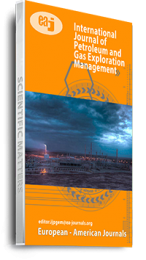Recently, natural gas reservoir exploration has become one of the most important priorities which countries are competing; most of these reservoirs are low-permeable and tight formations or so-called shale gas formations which are need special techniques to produce the hydrocarbons. Hydraulic fracture is a well stimulation technique in which a pressure-induced fracture to form a conductive path for trapped fluids in low permeable zone; it is also applied to unconsolidated high permeable zone to control the movement of formation sand toward the wellbore. The production through this fracture is a function of two factors, fracture length and fracture conductivity. The current work presented, the effect of fracture length and conductivity in well productivity for low-permeable formation of Hossan -1 through Block 8- Sudan. Using the default shally sand properties combined with 3 D reservoir simulation software (CMG), series of scenarios were performed under different fracture lengths and dimensionless conductivities. Dimensionless conductivity of 1, 2, 3, 5, and 10 and fracture lengths of 300, 500, 700, 900, and 1000 ft were studied; with constant fracture width of 0.05 ft. The results presented that a fracture length of 700 to 900 ft is the optimum length to achieve good gas production; length less than 700 ft can case production restriction; while an unfavorable job can be achieved with length greater than 900 ft due to water production. The recommended dimensionless fracture conductivity (FCD) is 1.0 to 2.0 to avoid massive water production. Using Fracture with these parameters, the recovery factor can be increased from 0.82% to more than 3.0% with a daily gas production of 0.3*106 ft3/day, while a cumulative gas can reach 0.52 MMM ft3 with 12000 bbl of water.
Keywords: hydraulic fracturing; gas production; fracture conductivity; fracture length; reservoir.

